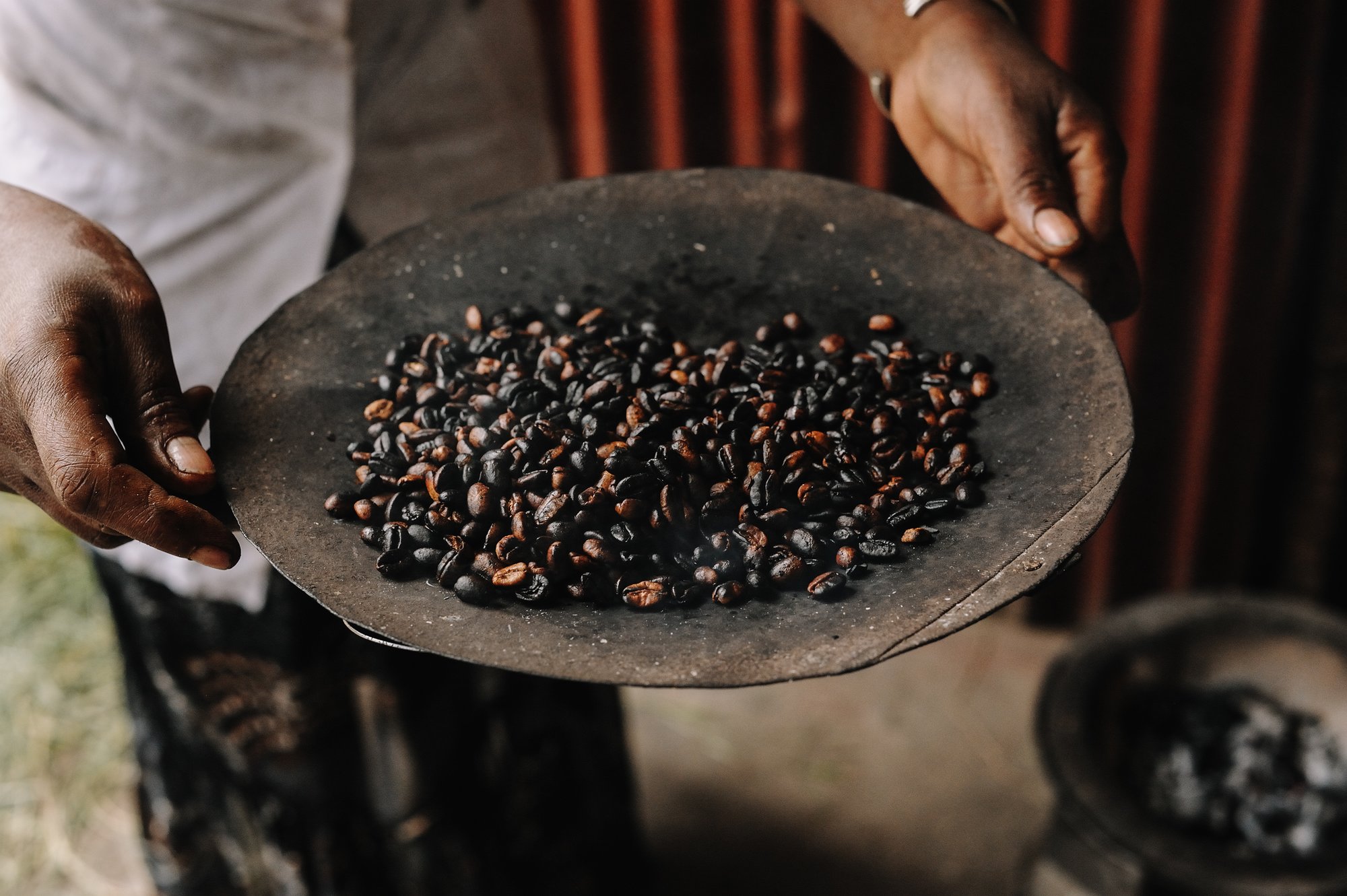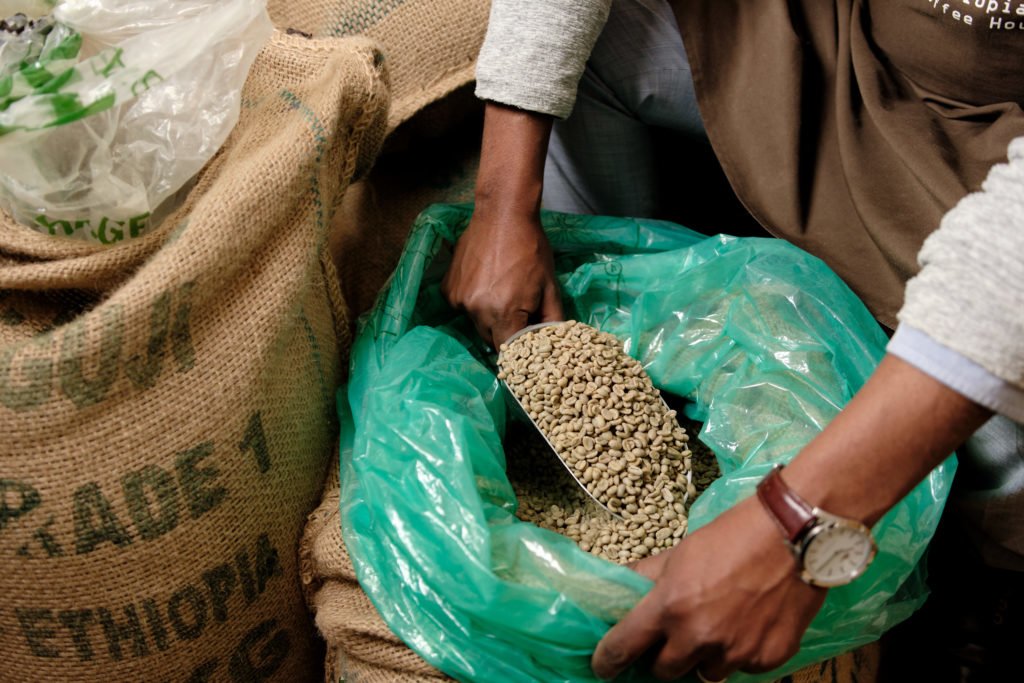Ethiopia, the Birthplace of Coffee, Still Produces Highly Desirable Beans

Traditional Ethiopian coffee beans roasting. Adobe Stock image.
Coffee is a diverse crop. Every continent across the world, sans Antarctica, has several major coffee producers and/or consumers. One such producer is the African country of Ethiopia. Coffee is ever present in Ethiopian culture, as about 60 percent of the country’s foreign income comes from coffee sales, which makes up about 3 percent of the world’s coffee market. Beyond Ethiopia’s massive share in the coffee market, it is believed that the Arabica coffee bean, the world’s most popular coffee bean, finds its origin in the highlands of Ethiopia.
As of 2016, Ethiopia is the fifth-largest coffee producer in the world, producing about 384,000 metric tons (846,575,000 pounds). That coffee production is split into five primary coffee types based on regional trademarks highlighted by the Ethiopian government: Harar, Jimma, Nekemte, Sidama, and Yirgachefe. Harar, Jimma, and Nekemte are primarily washed coffees that rely on water immersion to clean the mucilage from the coffee bean, while Sidama and Yirgachefe are primarily sun-dried, naturally processed coffees. Ethiopia is one of the few countries that produces both natural- and wet-processed coffee.

The wet-processing technique is more common for Ethiopia’s premium coffees. For this process, the mucilage is removed after harvesting, usually the same day. The beans are then immersed in water to be sorted, as less-dense coffee cherries float and leave the denser ones on the bottom of the immersion tank. These cherries are then fermented in cement water tanks for about a day before they are dried. Damaged coffee beans are removed during a final inspection.
The reason that more premium coffees are wet-processed is because of the “cleaner” taste that the process provides, meaning that the coffee flavor itself shines through and is not influenced by the process. It generally results in a bolder, more acidic coffee with a stronger clarity of flavor and overall aroma. The primary issue with wet-processing coffee is that it requires large quantities of water and expensive machines. In more rural and remote areas, it’s nearly impossible to process coffee using this method. That’s where the dry, natural process comes in.

Natural processed coffee requires no more than wood and any material similar to burlap or nylon. These materials are turned into raised drying beds, and that’s where the coffee will ferment for about three weeks. First, the beans are hand-sorted and then laid out on the raised drying beds. Over the three weeks, the skin and the mucilage of the coffee bean begin to dry until it becomes hard and completely dry. The beans are then gathered and prepared for consumption or shipment.
Generally, sun-dried natural coffees have a sweeter, fruitier character to them. This is as a result of the prolonged sun-baking of the cherry into the bean. Natural processed coffees also generally have a creamier mouthfeel. This process is more labor intensive and riskier than wet processing, as rain and mold growth can be problematic.
The main reason for the different processing techniques in Ethiopia is access to a consistent water supply and complex machinery. However, both processes are part of Ethiopia’s rich coffee history, dating back about 1,000 years. This African country continues to be one of the most consistent and largest producers of coffee in the world.

Tim Becker is a freelance journalist and journalism student at Florida Atlantic University. Tim has a diverse set of interests including gaming, technology, philosophy, politics, mental health, and much more. If he can find an angle to write about something, he will. Aside from his interests journalism is his passion. He wants to change the world with his words and photography. Tim writes for a variety of publications including the GoRiverwalk Magazine, the FAU University Press, and his personal blog on Medium.
BRCC and Bad Moon Print Press team up for an exclusive, limited-edition T-shirt design!
BRCC partners with Team Room Design for an exclusive T-shirt release!
Thirty Seconds Out has partnered with BRCC for an exclusive shirt design invoking the God of Winter.
Lucas O'Hara of Grizzly Forge has teamed up with BRCC for a badass, exclusive Shirt Club T-shirt design featuring his most popular knife and tiomahawk.
Coffee or Die sits down with one of the graphic designers behind Black Rifle Coffee's signature look and vibe.
Biden will award the Medal of Honor to a Vietnam War Army helicopter pilot who risked his life to save a reconnaissance team from almost certain death.
Ever wonder how much Jack Mandaville would f*ck sh*t up if he went back in time? The American Revolution didn't even see him coming.
A nearly 200-year-old West Point time capsule that at first appeared to yield little more than dust contains hidden treasure, the US Military Academy said.












